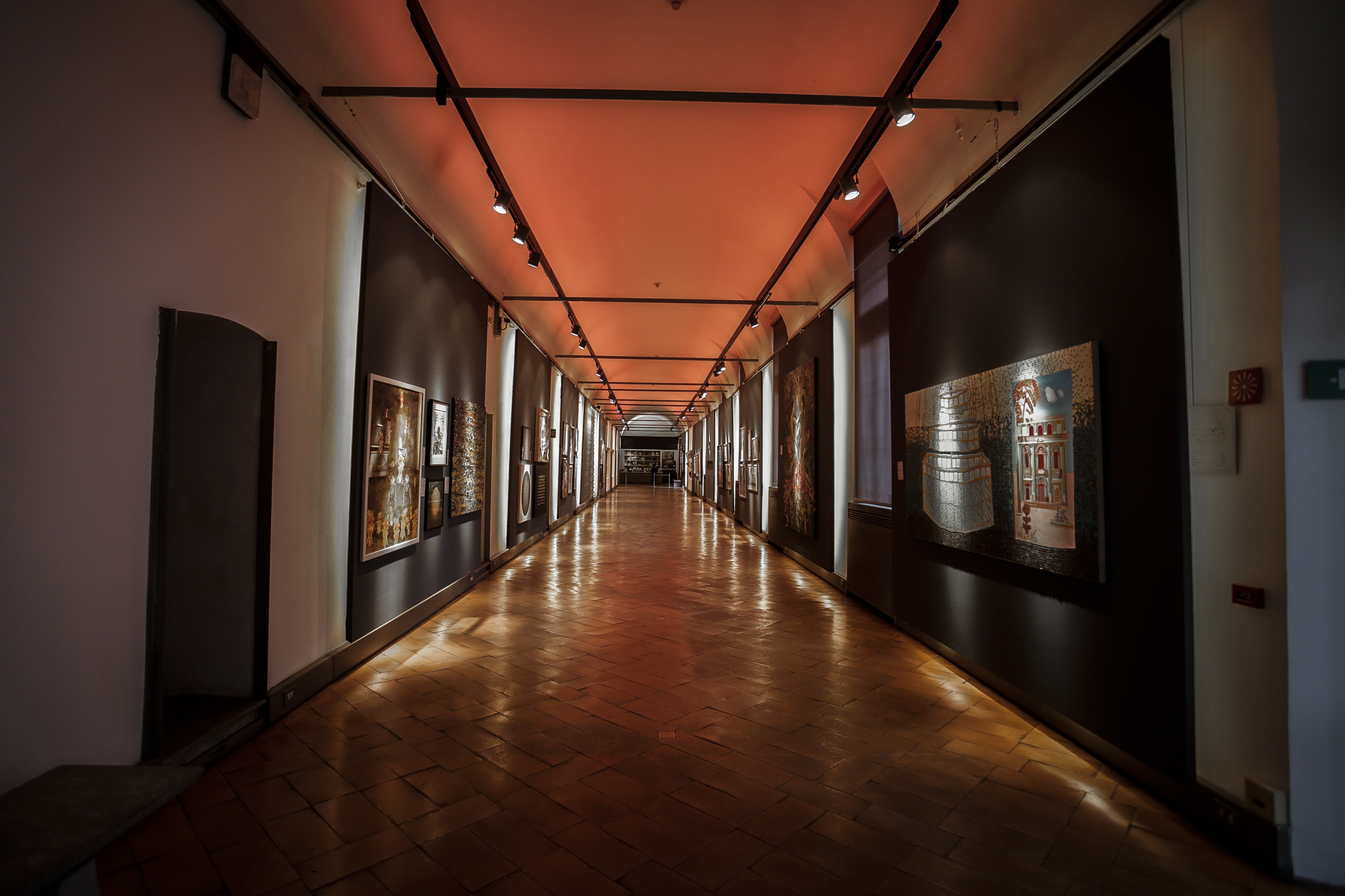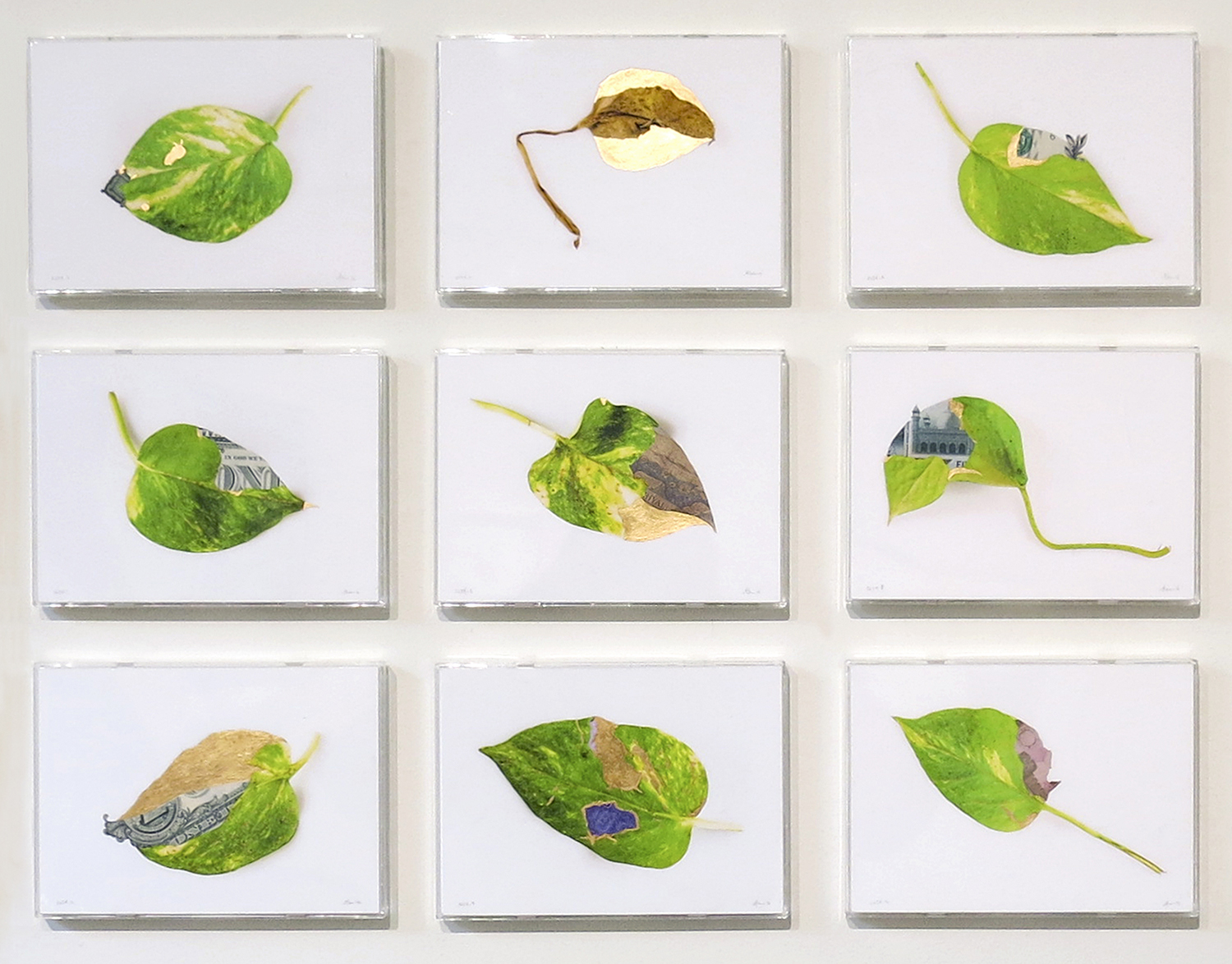“Art for Education: Contemporary Artists from Pakistan”
By Alessandra Alliata Nobili

Installation view of "Art for Education: Contemporary Artists from Pakistan" at the Carlo Maria Martini Diocesan Museum, Milan, 2018. Photo by Franco Covi. Courtesy Natasha Calandrino Van Kleef Exhibition and Lighting Project.
“Art for Education: Contemporary Artists from Pakistan” was the first group survey exhibition of Pakistani contemporary artists in Italy. Hosted at Milan’s Carlo Maria Martini Diocesan Museum, a Catholic art institution, the show was conceived with the purpose of supporting The Citizens Foundation (TCF), a Pakistan-based non-governmental organization that has been promoting secular education in the country since 1995, with a particular focus on the underprivileged female population. Organized by The Italian Friends of The Citizens Foundation and co-curated by Rosa Maria Falvo and Salima Hashmi, the exhibition gathered an intergenerational group of 60 artists who had donated their work to raise funds for the project.
Responding to common portrayals in Western media of “violence, poverty, political turmoil, gender inequities, and endemic corruption in Pakistan,” Falvo decided to offer a different, more nuanced representation of the country “with fresh examples of intimate storytelling,” she said in an article for artnowpakistan.com. In this register, many works on display, spanning painting, drawing, photography and print, drew from personal experience to channel the artists’ reflections on Pakistan’s sociopolitical realities.

ABDULLAH MI SYED, Currency of Love (Composition Z-6), 2016, pure pigment print on cotton rag of plucked, damaged and dead money-plant, leaves mended with 24k gold-leaf and used or uncirculated Pakistani banknotes, 13 × 18 cm each, installation 63.5 × 78.7 cm. Courtesy the artist.
Personal yet cross-culturally resonant was Abdullah MI Syed’s Currency of Love (Composition Z-6) (2016), composed of nine medium-sized, mixed-media prints, each featuring a partially damaged money-plant leaf with the missing parts repaired with inserts of 24k gold leaf and fragments of Pakistani banknotes. Syed collected the fallen leaves from his mother’s home, imagining that his mother planted and nurtured four of these money plants instead of her four sons, who had left the country in pursuit of better professional prospects. The artist’s act of restoring the leaves, the catalogue explains, represents his effort to preserve and cherish the evidence of his mother’s loving care. Recalling the gracefulness of miniatures, these delicate works spoke of treasured memories and familial separation in times of global economic migration.

Miniature tradition also inspired Final Destination (Escaping from Death to Life) (2015), a painting by Shakila Haider featuring an abstract, golden-brown decorative motif over a light blue background, recalling the shape of an archipelago stretched over a calm sea. This piece traces one of the migratory routes taken by the persecuted Hazara, the Shiite Pakistani ethnic minority to which the artist belongs. The picture’s surface is overlaid with a fine reticulum of laser-scored triangular shapes, reproducing the Kaptomar, a traditional symbol of the Hazara tribe. The fragmented aesthetic of this quiet piece was perhaps meant as a visual equivalent for feelings of personal displacement experienced by Haider as part of a discriminated ethnic group.
Mesmeric Space (2016), Farrukh Adnan’s pen-and-ink drawing on canvas, records the decay of the ancient ruins in the artist’s hometown of Tulamba, in southern Punjab, a famed 2,500-year-old archeological site which has now fallen into a state of neglect. Seemingly a semi-abstract hilly landscape at first sight, the richly textured drawing reveals at close inspection a stratification of symbols, patterns, surveying and excavation plans, which suggests that the layering of history ultimately results in a relentless blurring of memory.
Elsewhere, Seema Nusrat’s mixed-media collage on paper, A New Urban Landscape (2017), depicts piled-up, yellow sandbags, some of which are used as planters, cut out from a fibrous textile. Known as Hesco Bastions, this type of barrier has become pervasive in Karachi as protection from terror attacks. Nusrat’s conversion of a disquieting object into an architectonic ornament makes viewers reflect on the normalization of violence in Pakistan’s strained sociopolitical conditions.
Addressing the theme of violence in a similarly oblique manner was Teddy (2018) by Adeel uz Zafar, an etching on black vinyl portraying a toy bear entirely wrapped in grey gauze. Dark in both color and mood, the bandaged toy summoned up the grim reality of wounded and abused children.
Subtly weaving personal histories and sociopolitical concerns, “Art for Education: Contemporary Artists from Pakistan” succeeded in representing the breadth of approaches in Pakistani contemporary art, which, drawing from a rich artistic past, critically responds, without raising its voice, to a complex and difficult global present.
“Art for Education: Contemporary Artists from Pakistan” is on view at the Carlo Maria Martini Diocesan Museum, Milan, until November 25, 2018.








